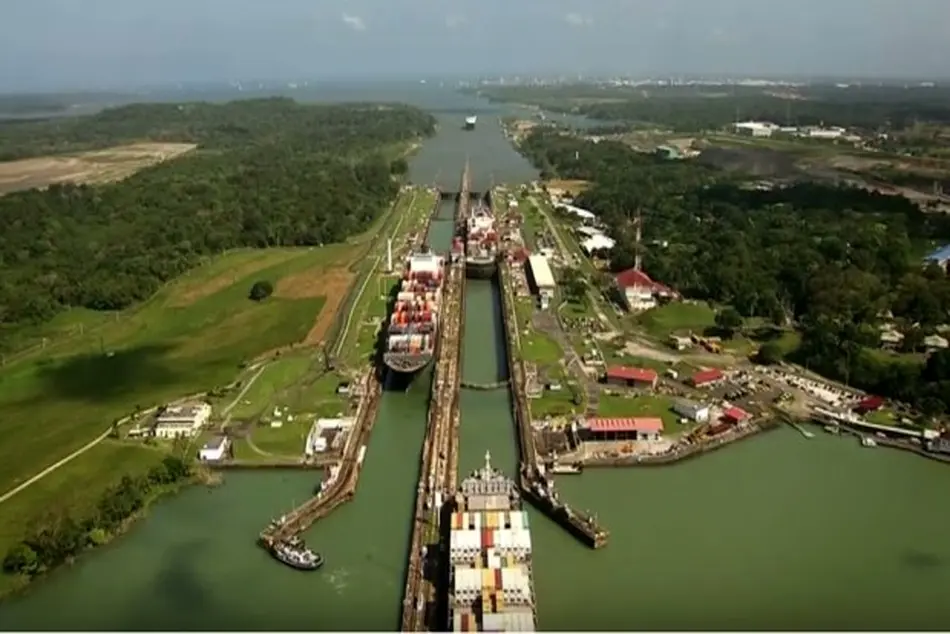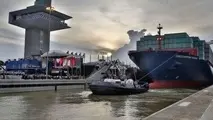Panama Canal expansion was not waste of time

It’s now a full year since Panama opened the upgraded Panama Canal, but the canal remains unable to handle any vessel carrying 13,500 TEU’s or more. However, this does not mean that the expansion was a waste of time and money, Xeneta notes.
Clearly the expansion was necessary; Panamax ships were obsolete by some four generations of vessel sizes, and the quickly-upgraded Suez Canal was suddenly the only route for the low-cost larger-TEU into the important North American East Coast market.
As explained, the admitted cost was U.S. $ 5.25 billion and that’s a considerable sum for a small country. But as container shipping exploded to 20,000+ TEU vessels, the Canal’s ability to transit only 5,000 TEU Panamax made all-water to the USEC uncompetitive; Panama had to either enlarge the canal or fade into shipping obscurity.
While the debt incurred by the Panama Canal Authority (ACP) is separate from Panama’s sovereign debt, many say the 12% ROI promised is specious and repayment will not be as smooth as promised. Transit tolls cannot be raised above those charged by the Suez Canal Authority, and with China-USEC transit times via either canal within 36 hours of each other, Panama offers no serious advantages; in truth China-Canada WC -rail offers the best service into the US Midwest and Canada as far east as Montreal. That’s sobering competition.
The oft-promised Nicaraguan canal option remains a non-starter; the Chinese businessman spearheading the project is more pants than action; instead Beijing is putting serious effort and money into their One-Belt-One-Road project, where the PRC-EU rail service is siphoning increasing amounts of time-sensitive and expensive freights from the box lines. A topic worth a future article perhaps.
What The Expansion Means For the Container Industry
According to Xeneta, the expansion was a “god-send” for the cash-strapped competitive industry. At no cost to the carriers, they now have legitimate options on shipping to the US, and are able to utilize either or both depending on the volumes of cargo they are carrying. If times are good, Supra-Panamax’s and Mega’s can use the Suez Canal, while in leaner times, carriers can rely on their 13,000 TEU vessels and transit through Panama. Or they can operate both; with the ports of both Baltimore and Savannah working hard to improve their intermodal reach into America’s industrial Midwest and south,
Savannah just reported their 2017 total volume in/out increased 6%, so clearly the combination of the expanded Panama and Suez Canals has increased international trade.
With virtually every port from Newark/New York south to Savannah frantically deepening their ports to 50’ in order to accept the Neo-Panamax’s and larger, the carriers finally have options better than slow-steaming and phantom voyages; 2017 US container imports are well-up; end-Jan 2017 illustrate a national increase of 11.2%. The USWC is up 9.3%, with the USEC/Gulf up 13.9%.
Overall, data shows some 1,360 6,000-13,200 TEU vessels have used the Panama Canal since it was re-inaugurated last June, with box ships 44% of the total.
Surprisingly, equal beneficiaries of the expansion seem to be increased exports of LNG, LPG, coal, and grain from the US Gulf to Asian ports that are now able to transit through the expanded Panama Canal, along with shipments of grain coal, and soybeans that are now flowing to China and Asia from Colombia, Argentina, and Brazil.
As a result, it would be fair to say the Panama Canal expansion has been a success to both importers, exporters, and consumers on both sides of the Pacific Rim.



